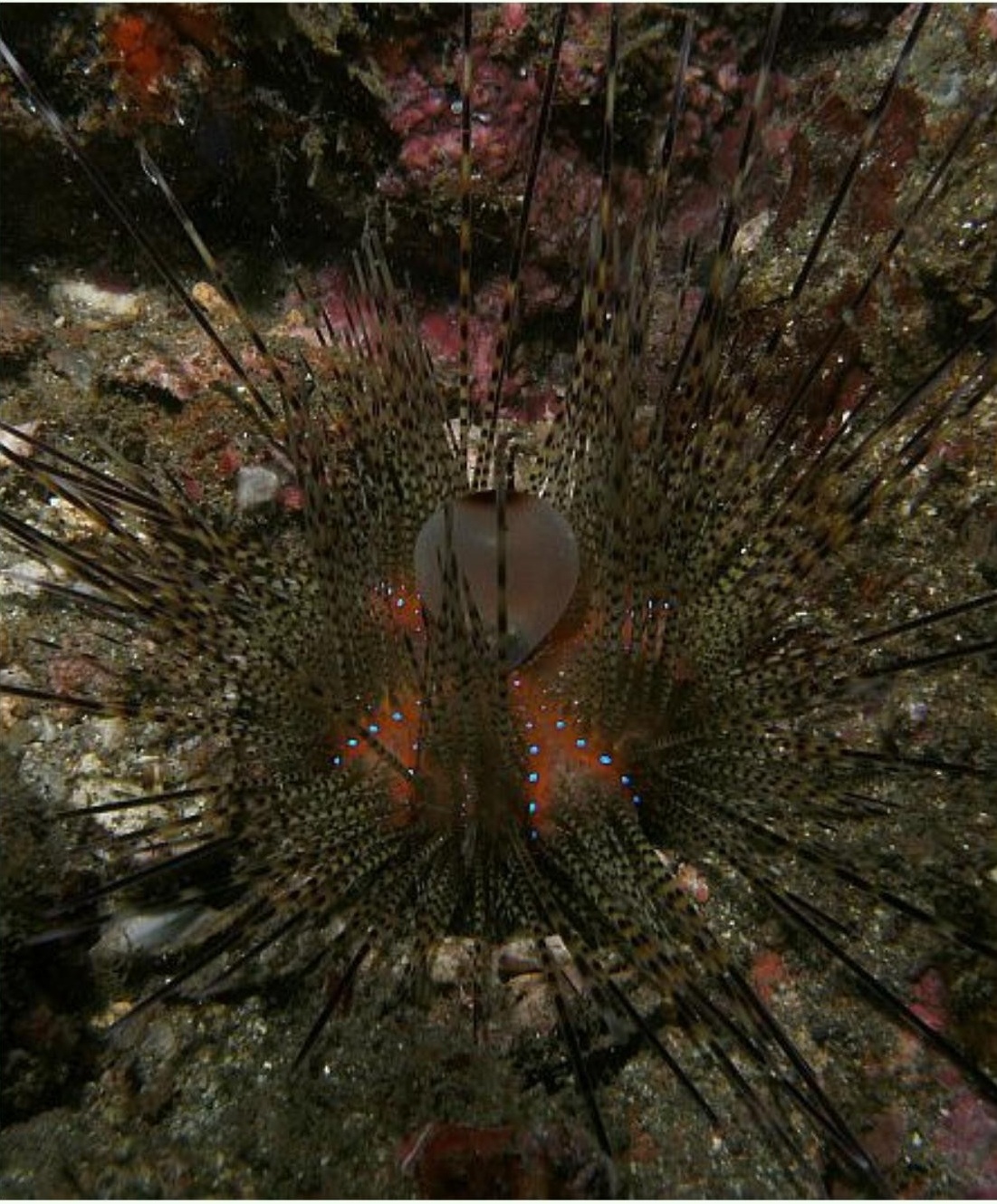By Terry Sovil from the July 2016 Edition
History
Snorkeling can trace its roots back over 5,000 years of history. In a forerunner to the modern snorkel, 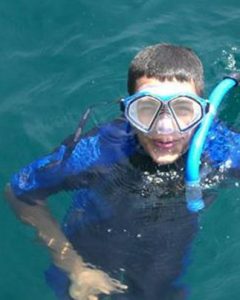 ancient divers used hollow reeds to allow them to breathe while submerged in water.
ancient divers used hollow reeds to allow them to breathe while submerged in water.
The diving bell allowed divers to take breaths without returning all the way to the surface of the water. But it wasn’t very mobile. Instead, attempts were made to allow the diver to breathe from the surface air. Aristotle mentions divers taking air from a tube connected to the surface. Leonardo da Vinci included, among his inventions, several designs for diving apparatuses, from simple tubes leading to floats at the surface of the water to an almost completely self-contained diving suit.
People soon found out that tubes connecting a diver with the surface were of limited use. Water pressure below one or two feet quickly became too high for even the strongest pair of lungs to take a breath. Today we have modern rubbers and plastics. These allow snug fitting masks and goggles with tempered glass for the diver’s safety. We now have more efficient snorkeling fins, developed to allow snorkelers to navigate with ease.
Basics
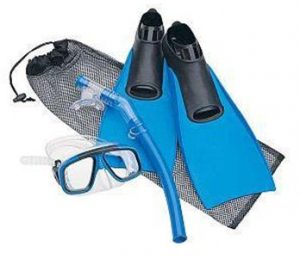 A snorkeler must be comfortable in the water and in wearing the mask and breathing through the snorkel. Practice putting your face below the surface and looking through the mask. You can breathe through the snorkel while looking around at the aquatic life. Although relatively simple, beginning snorkelers should know their way around their mask and snorkel, including how to clear both of water. Clearing a snorkel is an easy process. If you find your snorkel tube flooded simply exhale with a strong force through your mouth, this sends the water up and out the end of the snorkel. Some snorkels come with built-in drainage valves, allowing the water to be pushed out a one way valve.
A snorkeler must be comfortable in the water and in wearing the mask and breathing through the snorkel. Practice putting your face below the surface and looking through the mask. You can breathe through the snorkel while looking around at the aquatic life. Although relatively simple, beginning snorkelers should know their way around their mask and snorkel, including how to clear both of water. Clearing a snorkel is an easy process. If you find your snorkel tube flooded simply exhale with a strong force through your mouth, this sends the water up and out the end of the snorkel. Some snorkels come with built-in drainage valves, allowing the water to be pushed out a one way valve.
Clearing a mask while snorkeling simply means: lift your head out of the water and pull forward on the front of the mask. This will open up a gap in the bottom of the mask, allowing the water to drain out the bottom.
To do this, you will need to be comfortable with using your snorkeling fins to stay afloat upright as well as to move around while floating face down in the water. The most common underwater kick is the basic flutter stroke. As you kick, use a slow, comfortable pace and remember to keep your fins submerged in the water. You should find that a pace of about twenty kicks per minute will give you a good cruising speed through the water without too much fatigue. Keep your fins under the water. Breaking the surface uses more energy.
Safety
The most important safety tip while snorkeling is to never do it alone. Choose a buddy who you are comfortable with and stay close together while you are out. And don’t snorkel if you cannot swim! Stay close to shore or the boat. Be aware of your surroundings. Know the area that you are diving in and if there are any areas to avoid. Be very careful around rocky shores or pounding surf which can pick up a snorkeler and cause injury. Retain your energy. Relax and let your wetsuit float you! Do not touch marine life. Be aware of the seabed. Do not let yourself get into too shallow waters.
Snorkel Gear and Equipment
Masks
The mask is the centerpiece of the collection. A proper mask serves as the window of air between a 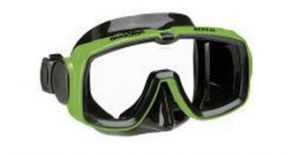 snorkeler and the world beneath the water. For this reason, when choosing a mask, a snorkeler should pick one that provides a clear, unobstructed view and does not limit peripheral vision. Some masks include side windows, to allow for wider vision, while others simply widen the front lens. Tinted glass should be avoided. A mask must fit correctly. Buy your mask from a reputable dive shop and they will assure a good fit and high quality!
snorkeler and the world beneath the water. For this reason, when choosing a mask, a snorkeler should pick one that provides a clear, unobstructed view and does not limit peripheral vision. Some masks include side windows, to allow for wider vision, while others simply widen the front lens. Tinted glass should be avoided. A mask must fit correctly. Buy your mask from a reputable dive shop and they will assure a good fit and high quality!
Pricing: Low-end masks sell for $15 to $30, while top-of-the-line masks approach $80 or even $100. For the casual snorkeler, a quality mask that will last should run you around $35-$45.
Snorkels
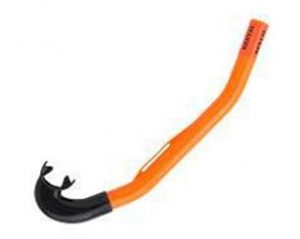 A snorkel is a flexible tube, generally made from plastic or stiff rubber, which connects a snorkeler to the surface air. Snorkels are a diver’s lifeline, allowing them to breathe while their face is in the water. The right snorkel should let you breathe easily and comfortably for extended periods of time, without making you short of breath or light-headed. If the bore is too wide, however, it may make it more difficult to clear water from the snorkel. Most snorkels measure between 12 and 18 inches, but choose one that feels comfortable for you.
A snorkel is a flexible tube, generally made from plastic or stiff rubber, which connects a snorkeler to the surface air. Snorkels are a diver’s lifeline, allowing them to breathe while their face is in the water. The right snorkel should let you breathe easily and comfortably for extended periods of time, without making you short of breath or light-headed. If the bore is too wide, however, it may make it more difficult to clear water from the snorkel. Most snorkels measure between 12 and 18 inches, but choose one that feels comfortable for you.
Note the construction of the snorkel’s mouthpiece. Every diver has a mouth shaped slightly differently. Choose a snorkel for comfort and fit! A snorkel mouthpiece has two parts: an oval lip flange, which fits just inside the diver’s lips, and the bitepiece, which is gripped between the diver’s teeth. The bitepiece should be held securely between the teeth but does not need to be bitten down hard upon. The real seal is provided by the lips covering the flange.
Clear your snorkel with a sharp exhalation of air. At the surface simply look up (tipping your head back) and exhale gently to remove all water. There are many snorkel designs (100% dry, semi-dry and the old stand by, a snorkel that will flood). A reputable dive shop can help you select and fit a snorkel that will work for you and your needs.
Pricing: Basic snorkels can be found for $10-$15, while high-end snorkels will sell for $40 and up. For the average person, a $20-$25 snorkel will be more than adequate.
Fins
Fins provide efficient propulsion in the water. Fins increase your speed and mobility by 50%. There are two 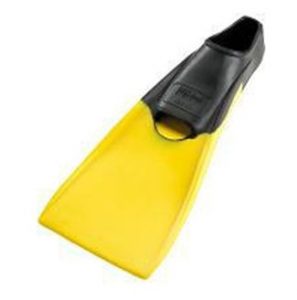 basic types of fins, open-heel fins and full foot fins. To be effective, fins must fit comfortably and securely. Too tight and they can hurt and cause blisters, too loose and they may chafe or fall off. Full-foot fins, which fit over the entire foot, offer more protection to the bottom of a diver’s heel, but because they are not adjustable, they do not provide as secure a fit. Open heel fins, held in place by an adjustable strap, are more secure but they don’t provide foot protection. Most snorkelers with open-heel fins wear neoprene booties with them. This protects their foot and allows them to wander the beach and over rocks.
basic types of fins, open-heel fins and full foot fins. To be effective, fins must fit comfortably and securely. Too tight and they can hurt and cause blisters, too loose and they may chafe or fall off. Full-foot fins, which fit over the entire foot, offer more protection to the bottom of a diver’s heel, but because they are not adjustable, they do not provide as secure a fit. Open heel fins, held in place by an adjustable strap, are more secure but they don’t provide foot protection. Most snorkelers with open-heel fins wear neoprene booties with them. This protects their foot and allows them to wander the beach and over rocks.
As with the other gear we’ve mentioned, a professional dive shop can help you select the right pair of fins for your needs!
Vests
Snorkel vests are small inflatable vests that can be worn in the water to help improve buoyancy while snorkeling. Many locations offer standard vest life preservers which can be decent alternatives.
We have often offered people swim noodles which offer a lot of support and can be tucked under the arms allowing you to better lay flat to see underwater. Wet suits will float you shoulder high in the water with no effort and offer sun protection, environmental protection, floatation and warmth. Boats have regular life preservers available for you to use.
Cameras
More and more snorkelers are buying cameras that can get wet. New models appear every day. There are 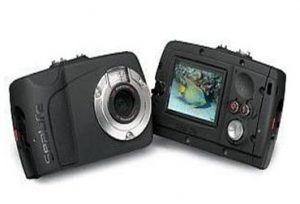 still 3 main categories:
still 3 main categories:
- Disposable underwater cameras
- Waterproof Cameras
- Traditional Cameras in a waterproof housing.
Download the full edition or view it online
—
Terry is a founding partner and scuba instructor for Aquatic Sports and Adventures (Deportes y Aventuras Acuáticas) in Manzanillo. A PADI (Professional Association of Dive Instructors) Master Instructor in his 36th year as a PADI Professional. He also holds 15 Specialty Instructor Course ratings. Terry held a US Coast Guard 50-Ton Masters (Captain’s) License. In his past corporate life, he worked in computers from 1973 to 2005 from a computer operator to a project manager for companies including GE Capital Fleet Services and Target. From 2005 to 2008, he developed and oversaw delivery of training to Target’s Loss Prevention (Asset Protection) employees on the West Coast, USA. He led a network of 80+ instructors, evaluated training, performed needs assessments and gathered feedback on the delivery of training, conducted training in Crisis Leadership and Non-Violent Crisis Intervention to Target executives. Independently, he has taught hundreds of hours of skills-based training in American Red Cross CPR, First Aid, SCUBA and sailing and managed a staff of Project Managers at LogicBay in the production of multi-media training and web sites in a fast-paced environment of artists, instructional designers, writers and developers, creating a variety of interactive training and support products for Fortune 1000 companies.


